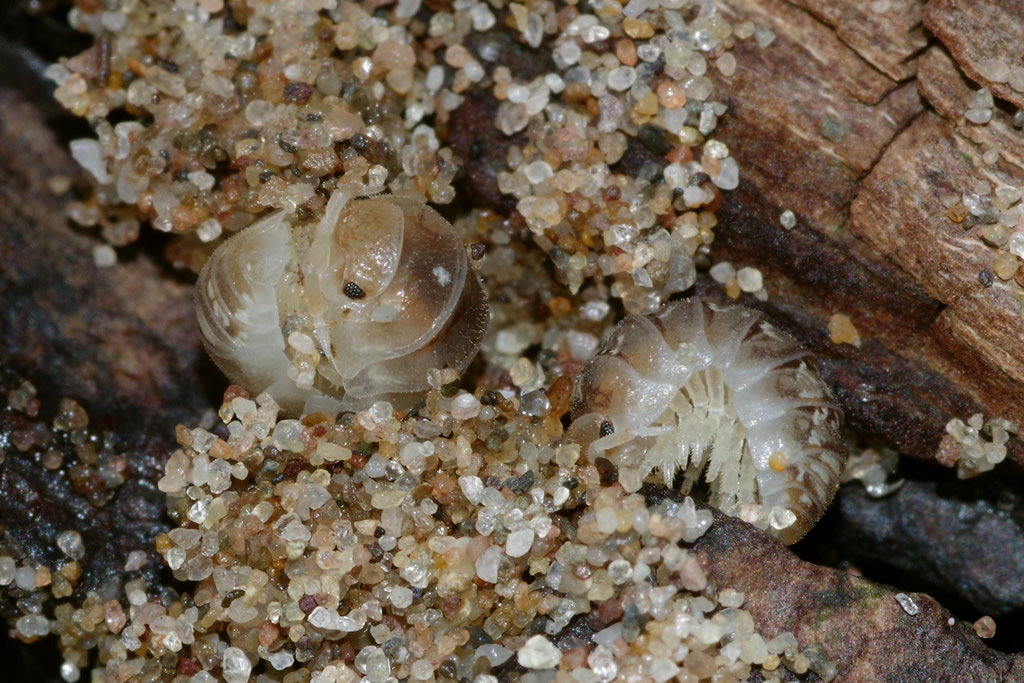Armadillidium album Dollfus, 1887
Common name
Status:
- GB IUCN status: Least Concern
- GB rarity status: Nationally Scarce
ID Difficulty
Identification
Our seven Armadillidium species and Eluma caelata (Family Armadillidiidae) are readily recognised in the field by their truncated 'square' uropods that end flush with the body and their ability to roll into a protective sphere (similar truncated uropods are also seen in the non-native Armadillidae species).
This coastal pill-woodlouse (to 6mm in length) is poorly pigmented, typically a mottled ‘sand’ colour, and the body surface is covered in minute spines. Armadillidium album has a characteristic stance when disturbed where the body partly enrolls to leave a few pairs of protruding legs to grip the underlying substrate. It can be confused with juveniles of Armadillidium vulgare.
Distribution
Armadillidium album is uncommon, but occurs sporadically around the British coastline as far north as the Scottish borders, and is known at several sites on the east coast of Ireland.
Habitat
It is strongly associated with undisturbed sand-dune systems, favouring a particular sand grain size, more rarely in salt marsh.
It is typically associated with storm strandline debris, where it is found clinging to the underside of driftwood, hiding within crevices, or at depths of 20-30 cm into underlying sand. It may occur with Armadillidium vulgare.
This summary is based on the detailed account in Gregory (2009).
References
Gregory, S. (2009) Woodlice and Waterlice (Isopoda: Oniscidea & Asellota) in Britain and Ireland. Field Studies Council/Centre for Ecology & Hydrology.
Links
World List of Marine, Freshwater and Terrestrial Isopod Crustaceans: https://www.marinespecies.org/isopoda/aphia.php?p=taxdetails&id=148673









